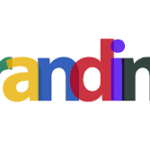[ad_1]
As a trader, choosing the right trading platform is one of the most important decisions you will make. With so many options available in the market, it can be overwhelming to find the one that fits your trading style, preferences, and goals. However, taking the time to research, compare and evaluate the different platforms can make a significant difference in your success as a trader.
To help you choose the right trading platform, we have prepared a comparative guide that covers the key features, benefits, and drawbacks of some of the most popular platforms in the market.
1. MetaTrader 4 (MT4)
MetaTrader 4 is a popular trading platform designed for forex, stocks, and futures trading. It is known for its user-friendly interface, powerful charting tools, and automation capabilities. MT4 offers over 50 technical indicators and charting tools, custom indicators, and logical rules for automated trades. However, it does not support automated trading on stocks.
Pros: User-friendly, customization, and scripting options, automated trading on forex markets
Cons: No automated trading on stocks, limited social trading options.
2. MetaTrader 5 (MT5)
MetaTrader 5 is the successor to MT4 and offers improved features and an expanded list of trading instruments. MT5 covers forex, stocks, commodities, and futures markets. Unlike MT4, MT5 supports automated trading on stocks. It offers 38 technical indicators and charting tools, custom indicators, and logical rules for automated trades.
Pros: Automated trading on stocks, comprehensive market analysis tools, and extensive customization options.
Cons: Steep learning curve compared to MT4, limited social trading options.
3. cTrader
cTrader is a multi-asset trading platform for forex and CFDs markets. It offers advanced charting tools, 60+ technical indicators, and a broad range of order types. cTrader offers copy trading and algorithmic trading through cAlgo. Additionally, it offers a mobile application to trade on the go.
Pros: Advanced charting tools, copy trading options, mobile application, and customization options.
Cons: Does not offer futures trading, limited number of brokers supporting the platform.
4. TradingView
TradingView is a web-based charting and analysis tool that offers a broad range of charting and technical analysis tools. It offers an easy-to-use interface and social trading features to interact with other traders. TradingView offers trading from the chart with supported brokers.
Pros: Comprehensive charting and analysis tools, social trading features, and trade-from-chart options.
Cons: Does not offer direct trading, limited asset offerings.
5. NinjaTrader
NinjaTrader is a platform designed for futures, forex, and stocks trading. It offers advanced charting tools, market analysis, 900+ technical indicators, and automated trading strategies. Furthermore, it offers extensive back-testing capabilities to evaluate trading strategies. NinjaTrader partners with many brokers and offers a wide range of integrations.
Pros: Comprehensive charting and analysis tools, automated trading strategies, and extensive integrations.
Cons: Steep learning curve, limited social trading options.
Conclusion
Choosing the right trading platform can be overwhelming, but it is critical for your trading success. By understanding the features, benefits, and drawbacks of the different platforms, you can find the one that fits your trading style, preferences, and goals. Consider your trading requirements, asset class you trade, trading features, and pricing structure while making an informed decision. Ultimately, your trading platform will be your most essential tool for executing trades, and investing the time upfront can pay off significantly in the long run.
[ad_2]









